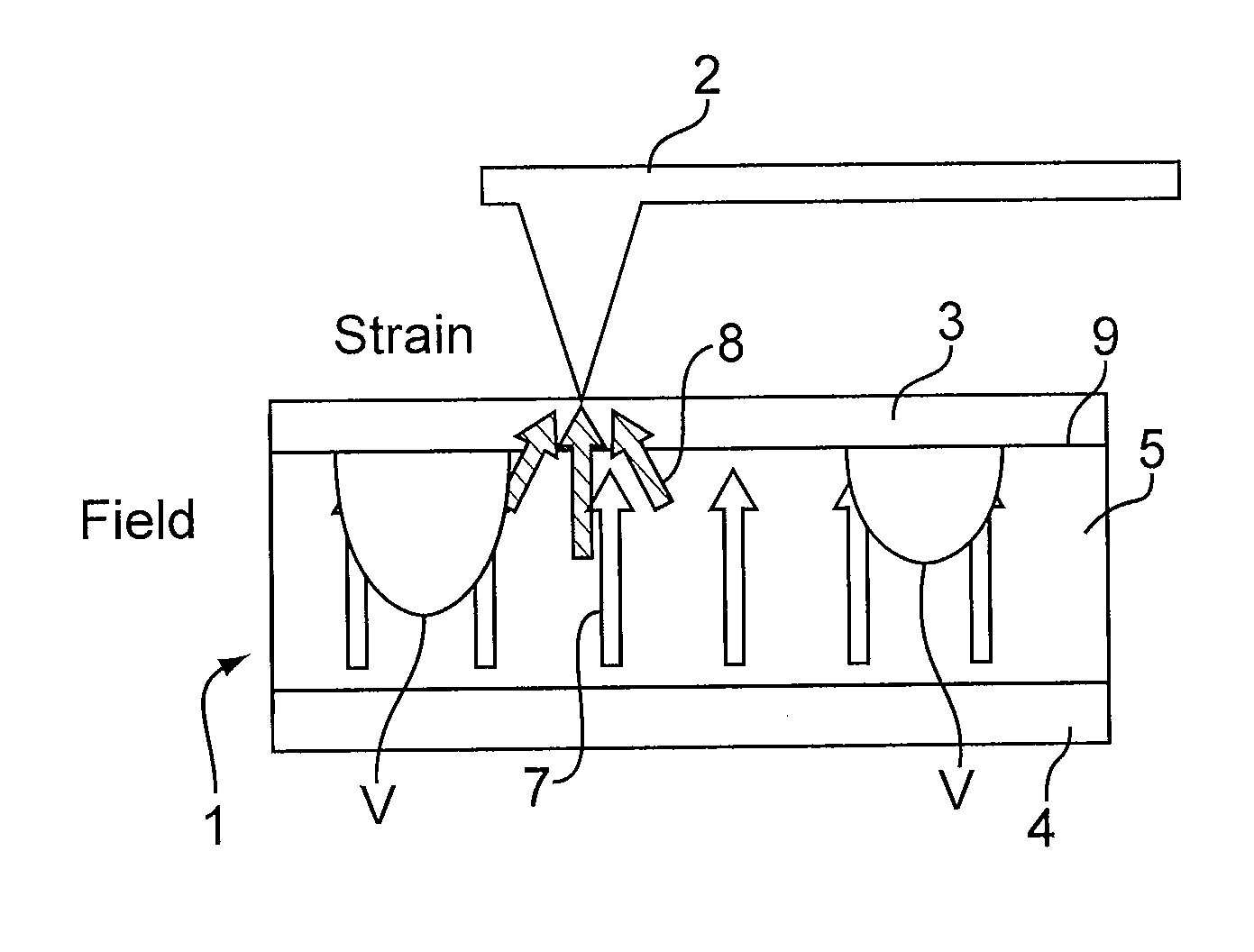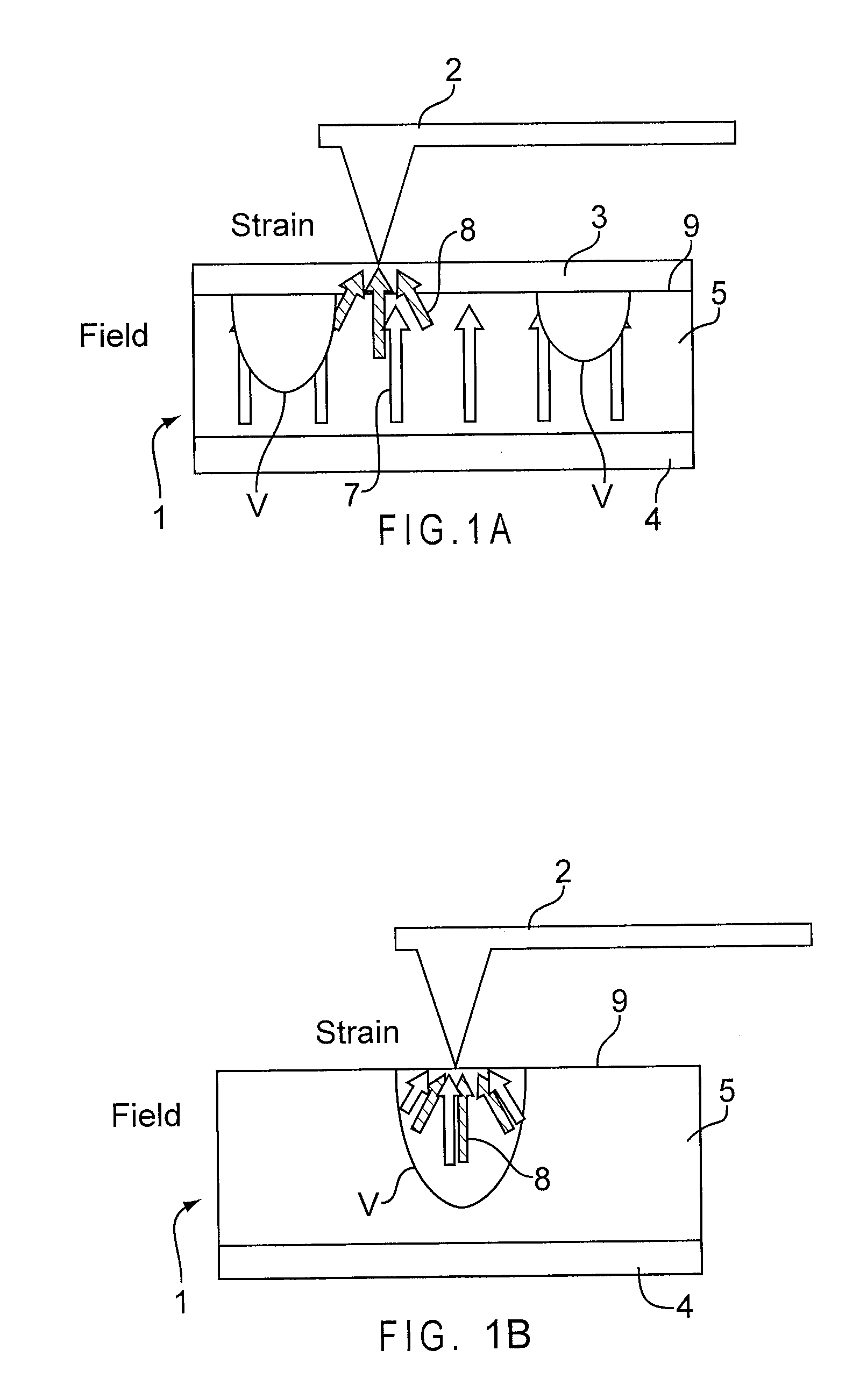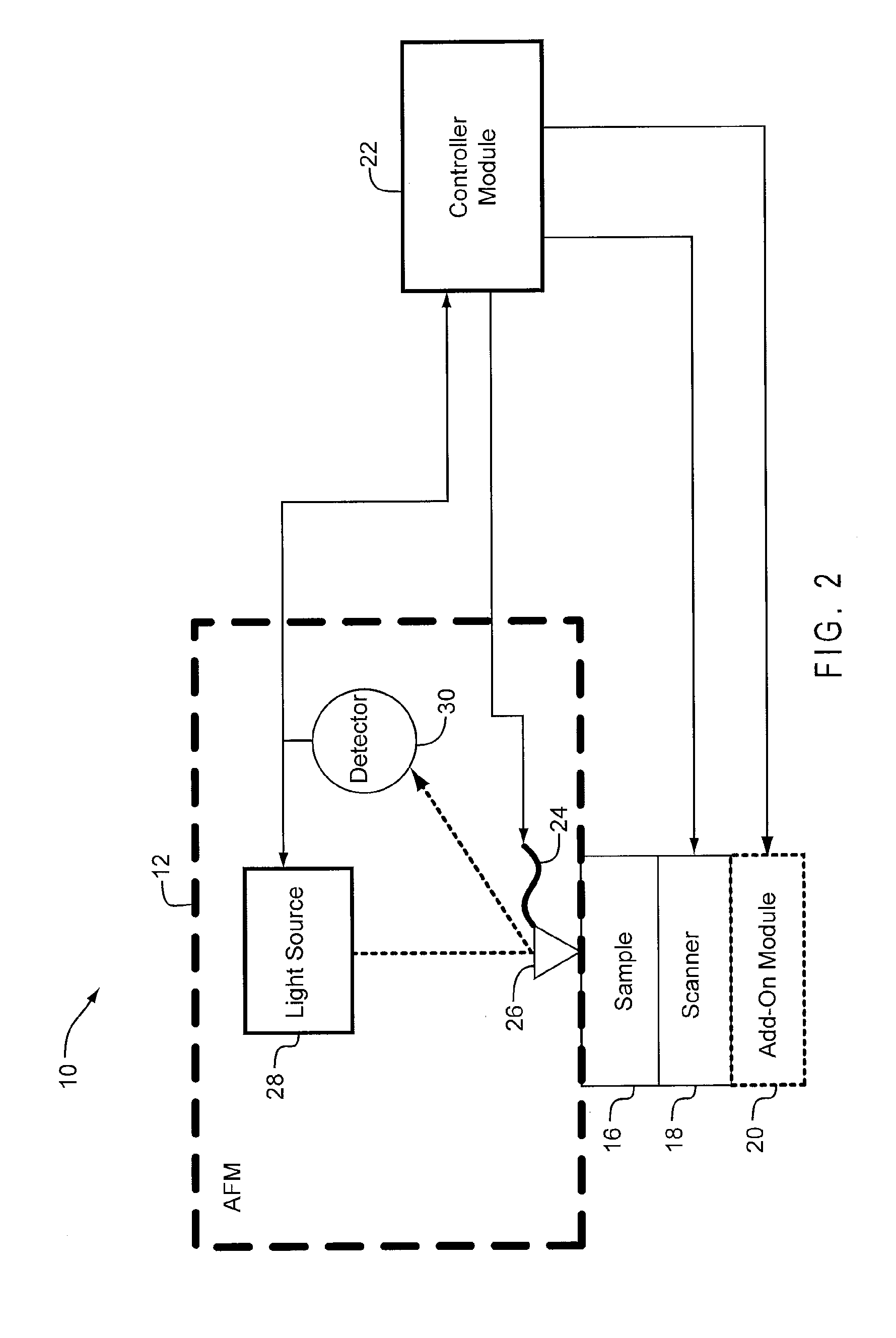Real space mapping of ionic diffusion and electrochemical activity in energy storage and conversion materials
a technology of energy storage and conversion materials, applied in the field of measurement apparatuses and methods, can solve the problems of limiting the study of ion transport to a scale of approximately ten micrometers or greater, preventing knowledge-based strategies for device development and optimization, and limiting the information on ion motion
- Summary
- Abstract
- Description
- Claims
- Application Information
AI Technical Summary
Benefits of technology
Problems solved by technology
Method used
Image
Examples
example i
High Frequency Excitation Method
[0049]In one embodiment, a high-frequency periodic voltage Vac is applied to the tip to measure ionic currents resulting from the local redistribution of lithium ions at the LiCoO2 surface (indicated as VAC in FIG. 3C). As previously described, the electric field generated by the application of the periodic voltage VAC alters the local electrochemical potential of the lithium ions within the LiCoO2 surface of sample 16. The application of the periodic single frequency, multiple frequency, or band excitation voltage VAC changes the local concentration of the lithium ions, causing the lithium ions to diffuse through the solid, which changes the lattice volume of the LiCoO2 surface at a contact region or area between tip 26 and the LiCoO2 surface (“tip-surface contact”).
[0050]In the demonstrated embodiment using the band excitation method, the use of a resonance enhancement technique enhances the sensitivity by a factor of approximately 30 to approximate...
example ii
[0057]To map spatially resolved Li-ion flows, ESM loops with VDC=±15 V and 7 Hz frequency were measured on a 100×100 grid over a 1 μm by 1 μm area of sample 16. The loop opening at 0 VDC associated with hysteresis of the strain response, was chosen as a convenient measure of the Li-ion flows into or out of the region under the probe during the voltage sweep. The higher the loop opening, the larger amount of Li-ions re distributed by the electric field, indicative of either higher Li-ion concentration or a higher ionic mobility. FIG. 7A clearly shows the highest hysteretic response at the sharp boundary feature. In addition, strongly enhanced Li-ion flow on the smoother boundary and a number of “hot spots” not associated with visible topographic defects are clearly seen. The observed behavior is highly reproducible and the high resolution maps acquired in the areas marked B and C in FIG. 7A of the scan are shown in FIGS. 7B and 7C, respectively.
[0058]The maps of...
example iii
[0061]Further insight into the origins of ESM contrast and nanoscale mechanisms of battery functionality can be obtained from the ESM hysteresis evolution during long-term spectroscopic imaging. Here, repeated measurements (cycling at 7 Hz with ±15 VDC) over prolonged intervals have shown that the observed ESM hysteresis slowly evolve with time. The systematic study of the influence of cycling on the local displacement loops was performed on a pristine battery sample. Voltage spectroscopy maps were taken after different numbers of sinusoidal cycles (7 Hz, 15 V amplitude) up to 6×105 cycles.
[0062]FIGS. 9A-9D show the evolution of the loop opening in the same area for repeated sinusoidal cycles of 1×104, 3×104, 1×105 , and 6×105 cycles, respectively. The hot spots visible in FIG. 9A continuously disappear, while, as shown in FIGS. 9B-C, the Li-ion flow at boundary-like features strongly increases. This shows that the Li-ions saturate the low density channels firs...
PUM
| Property | Measurement | Unit |
|---|---|---|
| frequency | aaaaa | aaaaa |
| lateral distance | aaaaa | aaaaa |
| vertical displacement | aaaaa | aaaaa |
Abstract
Description
Claims
Application Information
 Login to View More
Login to View More - R&D
- Intellectual Property
- Life Sciences
- Materials
- Tech Scout
- Unparalleled Data Quality
- Higher Quality Content
- 60% Fewer Hallucinations
Browse by: Latest US Patents, China's latest patents, Technical Efficacy Thesaurus, Application Domain, Technology Topic, Popular Technical Reports.
© 2025 PatSnap. All rights reserved.Legal|Privacy policy|Modern Slavery Act Transparency Statement|Sitemap|About US| Contact US: help@patsnap.com



